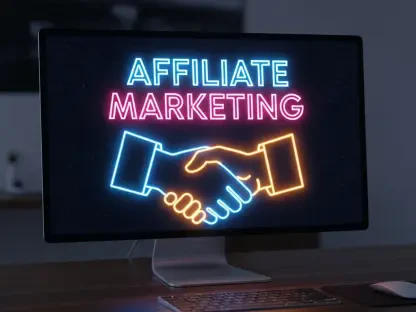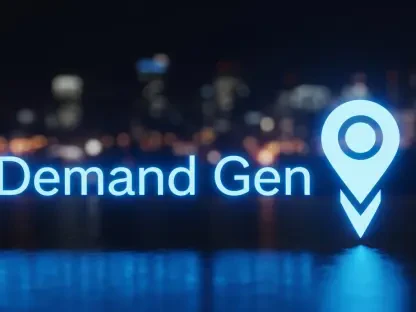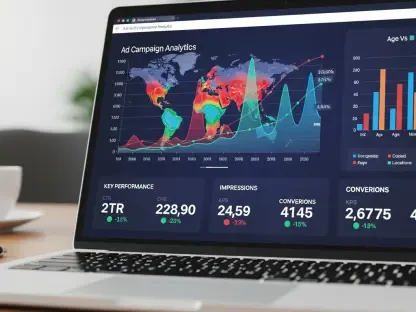Market Overview: A Sector in Turmoil
The German out-of-home (OoH) advertising market, once a powerhouse of brand visibility and innovation, finds itself in the throes of a staggering decline this year, marking one of the most severe slumps in recent memory. Industry giants have reported a sharp drop in advertiser confidence, with budgets slashed amid a storm of geopolitical uncertainties, including looming U.S. tariffs. This downturn has not only disrupted traditional advertising channels but has also exposed vulnerabilities in the rapidly growing digital out-of-home (DooH) segment. The purpose of this market analysis is to dissect the underlying causes of this crisis, evaluate the contrasting performance of static and digital formats, and provide actionable insights for stakeholders navigating these turbulent times. By delving into current trends and financial data, this examination aims to illuminate the path forward for an industry at a critical turning point.
In-Depth Market Analysis: Trends, Data, and Projections
Economic and Geopolitical Pressures Undermine Confidence
A significant driver of the current downturn in Germany’s OoH advertising sector is the erosion of advertiser confidence, largely fueled by external economic and geopolitical challenges. Uncertainties surrounding potential trade barriers with major global partners have created a climate of caution, prompting companies to scale back on marketing expenditures. Data from the Central Advertising Association indicates a 2% decline in gross advertising revenues across the board, with net revenues projected to fall by a staggering 8-9% in the third quarter of this year. This hesitancy is particularly evident in short-term advertising commitments, where businesses are reluctant to invest in campaigns without clear economic stability on the horizon.
The impact of these external pressures extends beyond mere numbers, reshaping the strategic landscape for advertisers. Large-scale campaigns, which often rely on quick turnarounds and adaptability, have been hit hardest, as firms prioritize cost-cutting over brand exposure. This shift has created a ripple effect throughout the industry, with many players forced to reassess their operational models to withstand the ongoing uncertainty. The challenge lies in restoring trust in the market, a task complicated by factors beyond the control of individual companies or even the sector as a whole.
Digital Out-of-Home Struggles While Static Holds Ground
A closer look at performance metrics reveals a stark contrast between digital and static OoH advertising amid this crisis. Despite a promising 10% revenue increase in DooH for the first nine months of this year, reaching €267 million for a leading market player, growth stalled dramatically in the third quarter. This slowdown marks a significant departure from the consistent double-digit gains typically associated with digital channels, highlighting their susceptibility to sudden market shifts due to reliance on short-term bookings. The flexibility that once positioned DooH as a dynamic advertising solution has become a liability in times of economic volatility.
In contrast, static OoH advertising has demonstrated unexpected resilience during the same period, outperforming its digital counterpart. Long-term contracts, often secured months in advance, have provided a buffer against the immediate budget cuts affecting digital formats. This disparity underscores a critical lesson for the industry: while innovation drives growth in stable times, traditional formats offer stability when uncertainty prevails. For advertisers, this dynamic suggests a potential pivot toward hybrid models that combine the predictability of static campaigns with the targeted reach of digital platforms.
Regional and Sectoral Nuances Amplify Challenges
Germany’s unique market characteristics further complicate the current downturn, intensifying its impact on the OoH sector. Unlike other European markets with more balanced media spends, Germany’s heavy dependence on OoH for branding means that any decline cuts deeper into overall advertising strategies. Urban centers, where digital screens dominate public spaces, have experienced steeper drops in bookings compared to rural regions reliant on static billboards, revealing a geographic disparity in the crisis’s effects. This uneven distribution poses additional hurdles for companies aiming to maintain a consistent national presence.
Moreover, the adoption of advanced tools like programmatic DooH remains limited among smaller advertisers, despite a notable 13% growth in this segment for major players. Many lack the resources or familiarity to leverage data-driven solutions, which restricts the potential for digital recovery in broader market segments. Addressing these regional and sectoral gaps will be essential for stabilizing the industry, as tailored approaches to different demographics and areas could help mitigate the widespread fallout from the slump.
Financial Resilience Amidst Broader Decline
Despite the overarching challenges, certain industry leaders have showcased remarkable financial resilience, providing a glimmer of hope. Group revenue for a dominant player reached a record €1.472 billion for the first nine months of this year, reflecting a modest 1% year-on-year increase. OoH media revenue also grew by 5% to €691 million, with adjusted EBITDA climbing to €318 million, up from previous figures. These numbers suggest that operational efficiency and strategic diversification can offer a buffer against market-wide declines, even in tough conditions.
However, the broader German advertising landscape paints a less optimistic picture, with the overall market struggling to maintain momentum. While OoH advertising has held relatively steady with a near-flat gross decline, the steep drop in net revenues signals underlying fragility. This dichotomy between individual company performance and industry-wide trends highlights the importance of adaptability, as firms that innovate and optimize stand a better chance of weathering the storm compared to those tied to outdated models.
Future Outlook: Signs of Recovery on the Horizon
Looking ahead, cautious optimism emerges for the German OoH market, with projections indicating a potential rebound in the near term. A stronger performance is anticipated in the fourth quarter, particularly during the holiday season, driven by renewed interest from major advertisers and agencies. Early indicators for next year also suggest a return to low single-digit growth for the broader market, with ambitious targets for double-digit gains among leading firms. This forecast hinges on stabilizing global conditions and a revival of confidence in short-term digital bookings, which have borne the brunt of the current slowdown.
Technological advancements, such as AI-driven campaign optimization, are expected to play a pivotal role in shaping recovery. These tools could enhance the precision and appeal of digital offerings, encouraging wider adoption if regulatory clarity around data privacy is achieved. The continued growth of programmatic DooH, even amidst the crisis, points to a sustained shift toward flexible, targeted advertising solutions. If these trends gain traction, they could redefine the competitive landscape, positioning early adopters for success in a revitalized market from this year to 2027.
Final Reflections and Strategic Pathways
Reflecting on the analysis, the German OoH advertising market faced a historic downturn this year, driven by geopolitical uncertainties and a profound loss of advertiser confidence. The stark vulnerabilities of digital channels, contrasted with the surprising stability of static formats, painted a complex picture of an industry at a crossroads. Financial resilience among key players offered a counterpoint to broader declines, while early signs of recovery in the fourth quarter provided a foundation for cautious hope.
Moving forward, stakeholders must prioritize diversified portfolios that balance the reliability of long-term static contracts with the innovation of digital platforms. Investing selectively in programmatic DooH, particularly through partnerships for smaller firms, can unlock high-impact opportunities without significant risk. Staying attuned to global economic developments remains critical, as external stability will largely dictate the pace of recovery. By adopting these strategies, the industry can transform challenges into stepping stones, building a more robust framework for sustained growth in the years ahead.









